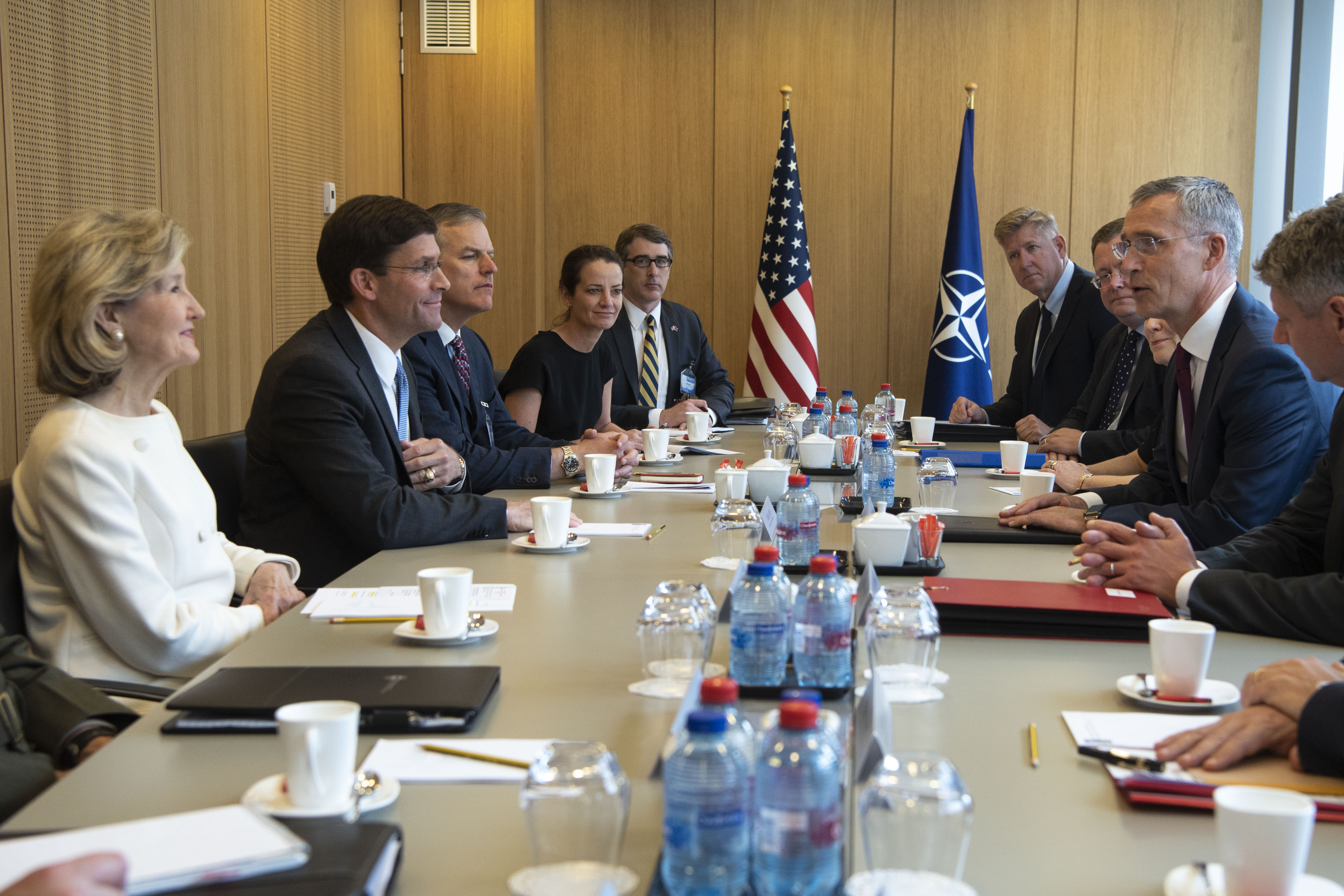NATO Summit Overview
Nato summit – The North Atlantic Treaty Organization (NATO) summit is an important gathering of leaders from the 30 member countries to discuss key issues affecting the alliance and global security.
The NATO summit concluded with a press conference by President Biden, who outlined the key takeaways and decisions made during the meeting. You can read more about the Biden press conference here. The summit focused on strengthening the alliance’s collective defense and deterrence, as well as addressing the challenges posed by Russia and China.
NATO was established in 1949 as a collective defense organization in response to the threat posed by the Soviet Union. Over the years, NATO has evolved to meet new challenges, including the rise of terrorism and the proliferation of weapons of mass destruction.
The NATO summit, held in Madrid, Spain, was a significant event that brought together leaders from across the globe. The summit focused on discussing the ongoing conflict in Ukraine and the need for a united response to Russian aggression. In a recent interview with ABC News , US President Joe Biden reiterated his commitment to supporting Ukraine and ensuring that the country’s sovereignty and territorial integrity are upheld.
The NATO summit served as a platform for leaders to reaffirm their solidarity and pledge their continued support for Ukraine’s defense against Russian aggression.
Key Topics and Agenda Items, Nato summit
The agenda for the summit includes a wide range of topics, including:
- The war in Ukraine
- NATO’s response to Russia’s aggression
- The future of NATO
- Climate change and security
- Cybersecurity
- Defense spending
Key Participants and Discussions
The NATO Summit brought together heads of state and government from the 30 member countries, as well as representatives from partner nations and international organizations. The summit was chaired by NATO Secretary General Jens Stoltenberg.
The participants discussed a wide range of issues, including the war in Ukraine, the rise of China, and the future of NATO. They also reaffirmed their commitment to the collective defense of the alliance.
Heads of State and Government
- Joe Biden, President of the United States
- Olaf Scholz, Chancellor of Germany
- Emmanuel Macron, President of France
- Boris Johnson, Prime Minister of the United Kingdom
- Justin Trudeau, Prime Minister of Canada
Roles and Responsibilities
The heads of state and government are responsible for setting the overall direction of NATO. They meet regularly to discuss and decide on the alliance’s policies and strategies.
The Secretary General is the chief executive officer of NATO. He is responsible for implementing the decisions of the heads of state and government and for managing the day-to-day operations of the alliance.
Key Discussions and Debates
The key discussions and debates at the NATO Summit focused on the following issues:
- The war in Ukraine
- The rise of China
- The future of NATO
The war in Ukraine was the most pressing issue on the agenda. The leaders discussed the latest developments in the conflict and reaffirmed their support for Ukraine’s sovereignty and territorial integrity.
The rise of China was another major topic of discussion. The leaders discussed the challenges posed by China’s growing military and economic power.
The future of NATO was also discussed. The leaders reaffirmed their commitment to the collective defense of the alliance and discussed ways to strengthen NATO in the face of new challenges.
Outcomes and Impact: Nato Summit

The NATO summit yielded several significant outcomes, including the adoption of a new Strategic Concept and the announcement of increased military spending by member states. These decisions reflect a renewed commitment to collective defense in the face of Russia’s ongoing aggression in Ukraine.
Strengthened Deterrence and Defense
NATO leaders agreed to bolster the alliance’s deterrence and defense posture by increasing military spending, enhancing intelligence sharing, and improving readiness. The summit also saw the announcement of new deployments of troops and equipment to NATO’s eastern flank. These measures are intended to deter further Russian aggression and ensure that NATO is prepared to respond to any threat.
Support for Ukraine
NATO leaders reaffirmed their commitment to supporting Ukraine in its defense against Russia. The summit provided a platform for Ukraine’s President Volodymyr Zelenskyy to address NATO leaders and call for continued assistance. NATO members pledged to provide Ukraine with additional military aid, including heavy weapons and air defense systems.
Table: Key Decisions and Implications
| Decision | Implication |
|—|—|
| Adoption of a new Strategic Concept | Artikels NATO’s vision for the future and its priorities for collective defense |
| Increased military spending | Strengthens NATO’s deterrence and defense capabilities |
| Deployment of troops and equipment to NATO’s eastern flank | Enhances NATO’s ability to respond to threats in the region |
| Support for Ukraine | Demonstrates NATO’s commitment to the defense of its members and its support for Ukraine’s sovereignty |
The outcomes of the NATO summit have significant implications for the future of NATO and global security. The alliance’s renewed focus on collective defense sends a clear message to Russia that NATO is prepared to defend its members. The increased military spending and deployments will strengthen NATO’s deterrence and defense capabilities, making it more difficult for Russia to launch further aggression. The summit also demonstrated NATO’s commitment to supporting Ukraine, which is essential for maintaining stability in Europe.
